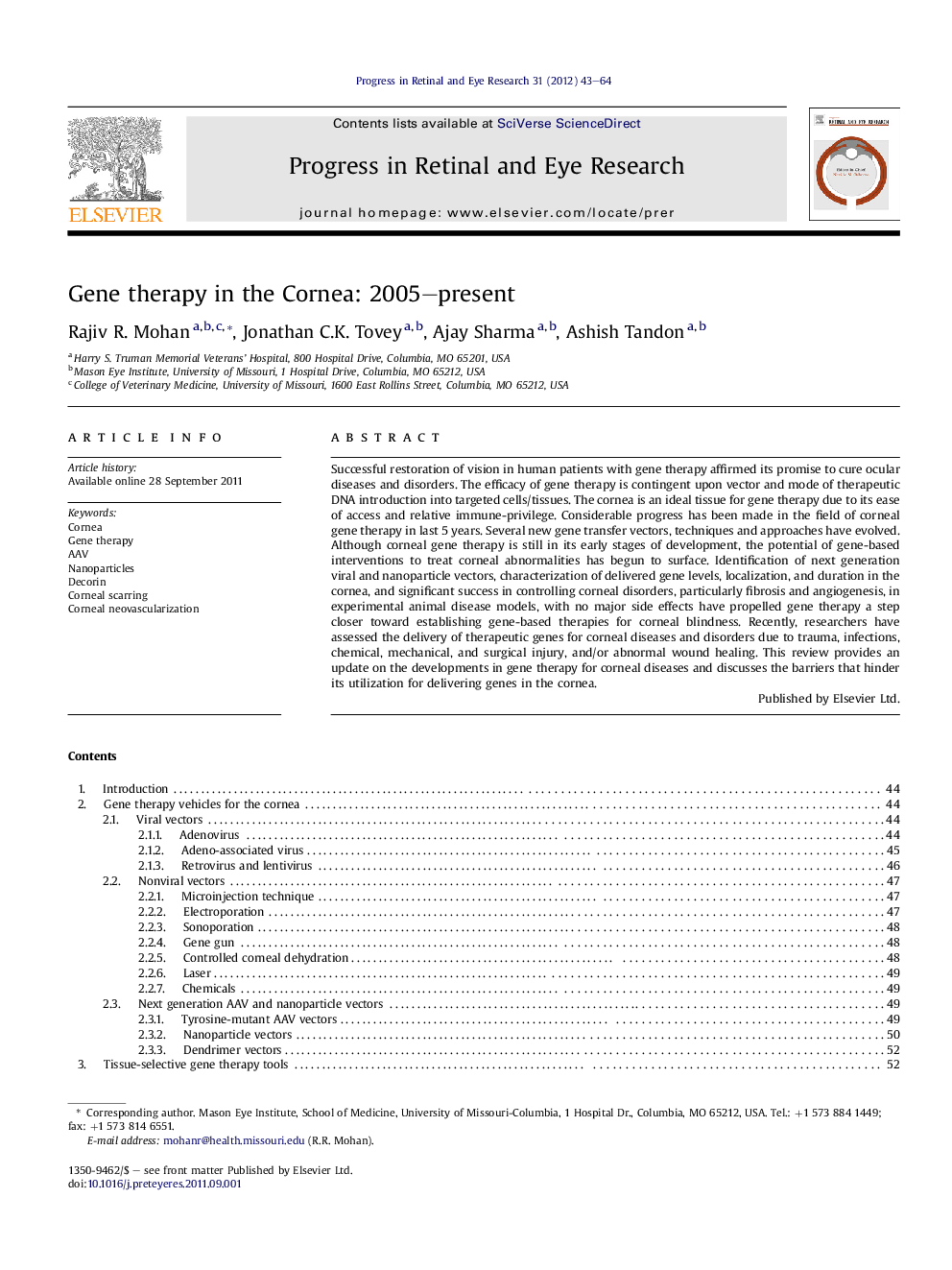| Article ID | Journal | Published Year | Pages | File Type |
|---|---|---|---|---|
| 6202749 | Progress in Retinal and Eye Research | 2012 | 22 Pages |
Successful restoration of vision in human patients with gene therapy affirmed its promise to cure ocular diseases and disorders. The efficacy of gene therapy is contingent upon vector and mode of therapeutic DNA introduction into targeted cells/tissues. The cornea is an ideal tissue for gene therapy due to its ease of access and relative immune-privilege. Considerable progress has been made in the field of corneal gene therapy in last 5 years. Several new gene transfer vectors, techniques and approaches have evolved. Although corneal gene therapy is still in its early stages of development, the potential of gene-based interventions to treat corneal abnormalities has begun to surface. Identification of next generation viral and nanoparticle vectors, characterization of delivered gene levels, localization, and duration in the cornea, and significant success in controlling corneal disorders, particularly fibrosis and angiogenesis, in experimental animal disease models, with no major side effects have propelled gene therapy a step closer toward establishing gene-based therapies for corneal blindness. Recently, researchers have assessed the delivery of therapeutic genes for corneal diseases and disorders due to trauma, infections, chemical, mechanical, and surgical injury, and/or abnormal wound healing. This review provides an update on the developments in gene therapy for corneal diseases and discusses the barriers that hinder its utilization for delivering genes in the cornea.
⺠Next generation AAV vectors for corneal gene therapy. ⺠Nanoparticles are promising nonviral vectors for corneal gene therapy. ⺠Delivery techniques role in tissue-targeted corneal gene delivery in vivo. ⺠Decorin gene therapy could be a potential treatment for corneal blindness. ⺠Translation of corneal gene therapy requires further research.
